Cadbury turns 200: Eleven milestones in its history
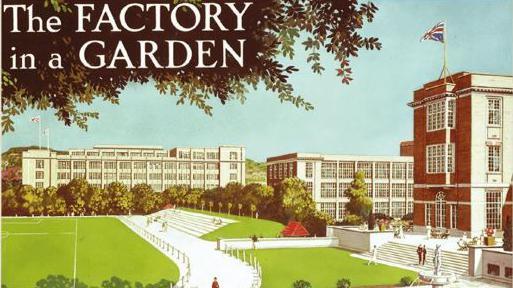
Bournville became a pioneering garden village that was replicated around the world
- Published
On 4 March 1824, John Cadbury opened his first grocery shop in Birmingham city centre. From humble beginnings, the family went on to become the world's biggest chocolate maker.
From the invention of Dairy Milk to a controversial takeover by an American food giant, we look back at 11 milestones in the company's history.
1824: A modest beginning for the first Cadbury shop
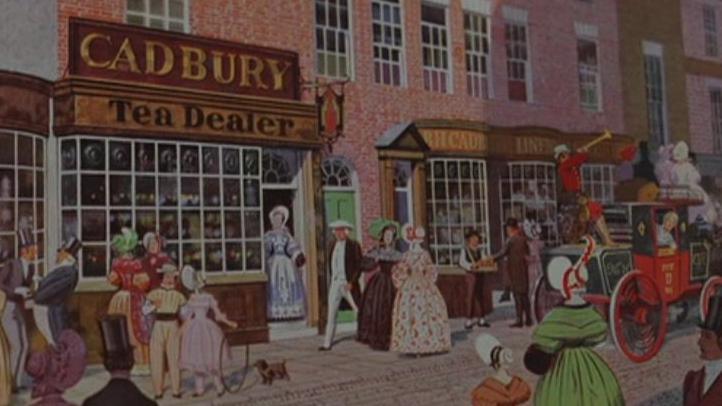
Cadbury started as a grocers, before selling chocolate transformed the family business
Opening his doors on Bull Street in Birmingham city centre, John Cadbury's first outlet was next door to a drapery run by his brother Richard Tapper Cadbury.
At the time, chocolate was only consumed as a beverage, which John began making with a pestle and mortar. The drink was a hit with upwardly mobile Georgians, who saw it as a mark of status.
The Cadbury business grew, with John opening a warehouse in 1831 and ramping up manufacturing with a new factory in 1847. But it would be his sons Richard and George who'd make the Cadbury name famous around the world.
1861: Ambitious brothers take over failing family business
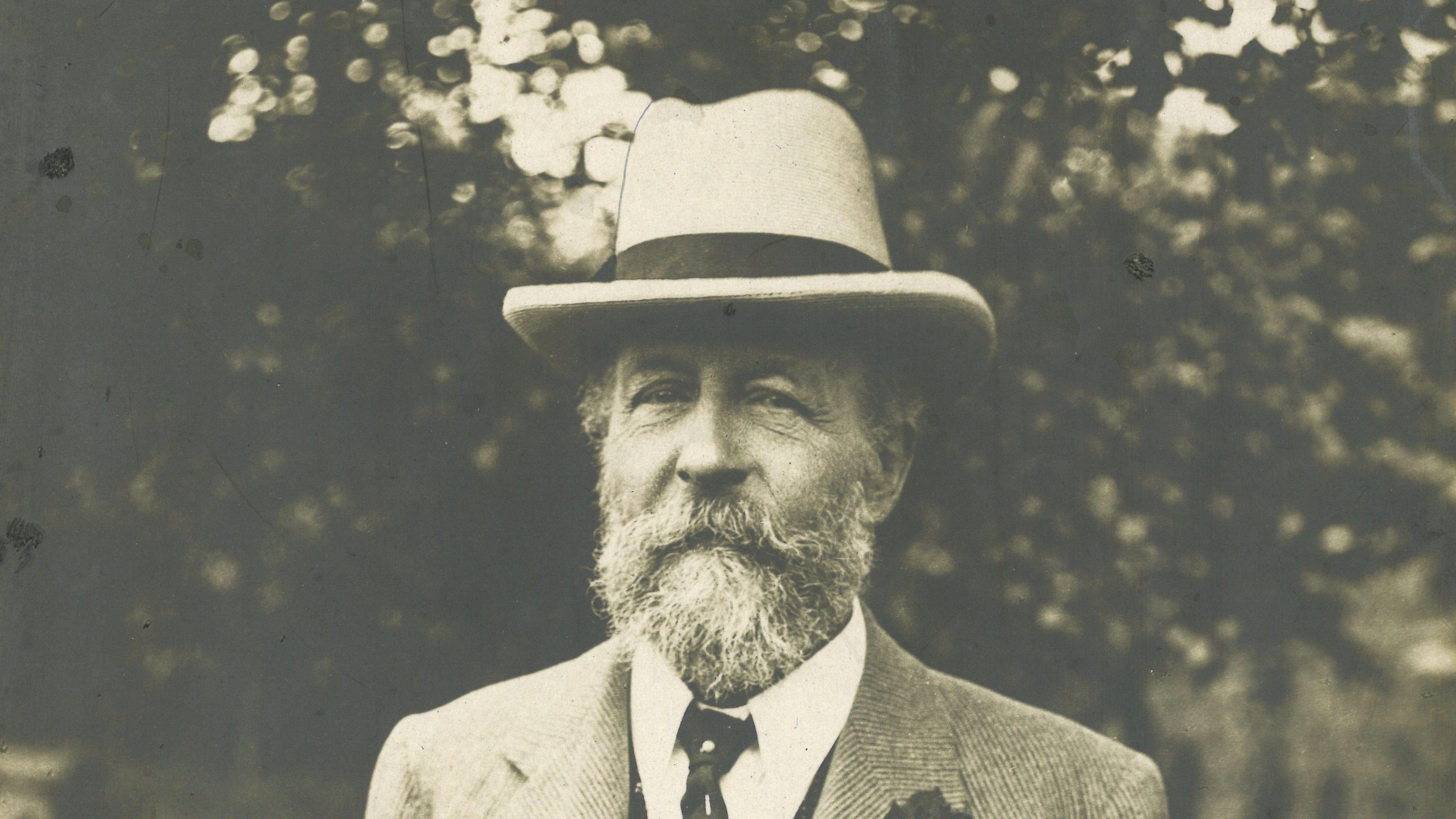
George Cadbury and his brother Richard turned the company's fortunes around
The Cadbury brothers took over an ailing business from their father John, with George quoted as saying "if the business ever makes a profit of a thousand pounds a year, I’d retire a happy man”.
The brothers' fortunes turned around after buying an innovative van Houten cocoa press from the Netherlands, which squeezed cocoa butter from the bean, improving its taste and texture.
Other manufacturers at the time were bulking out their chocolate with animal fat, red lead and even brick dust.
Cadbury's improved product turned around the company's fortunes, outgrowing its factory on Bridge Street, and leaving the brothers looking for new premises away from the dirty, squalid conditions in the city centre.
1879: Bournville, the factory in a garden
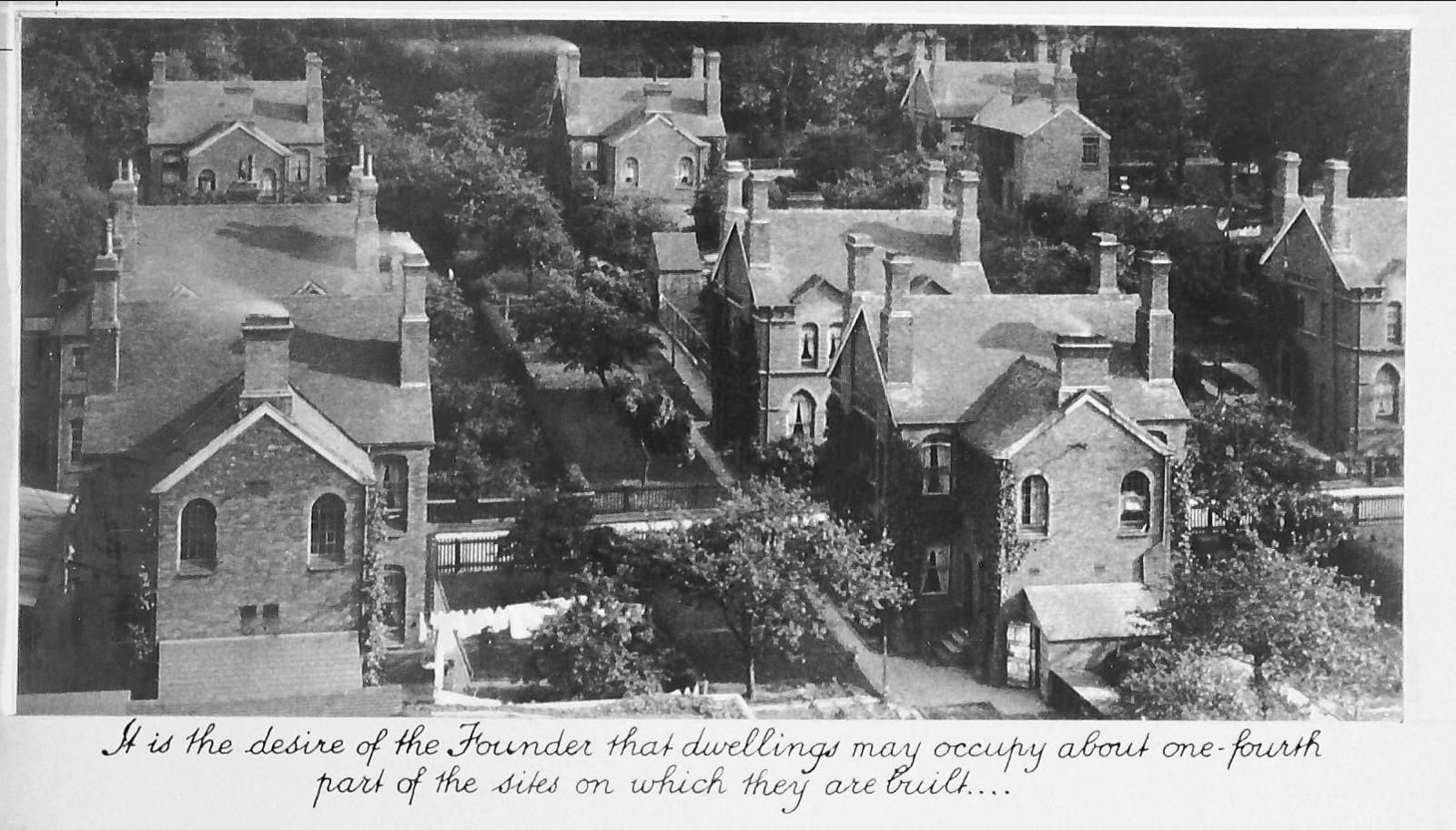
The first homes in Bournville were spacious, had big gardens, and were a real departure from the slum housing prevalent at the time
The Cadbury brothers, strict Quakers, wanted a different kind of industrial site, one where workers could live healthily alongside the factory.
Birmingham was undergoing an economic boom in the 1870s, with pioneering mayor Joseph Chamberlain removing swathes of slums to build the Parisian-inspired boulevard Corporation Street, the Council House, and Museum and Art Gallery.
But the brothers looked beyond the city centre to bring their vision to life. They bought 14.5 acres of land four miles south in what was then Worcestershire. The Bourn brook ran through it, with the Worcester Canal and a railway alongside.
They named the area Bournville, giving it a French-sounding name as a "marketing ploy", because French chocolate had the best reputation at the time.
The first trainload of 230 workers arrived in September 1879. The Cadbury brothers bought the remainder of the estate in 1893, prioritising homes for some of the workers, and plenty of green space.
The Bournville factory would become the biggest cocoa manufacturer in the world, employing up to 15,000 people at its height.
The garden village that surrounded it was seen as an innovative new way of housing the working classes. However, in line with the Cadbury's Quaker ideals, there was no pub, and no alcohol is sold anywhere in Bournville to this day.
1900: Trust to preserve Bournville's future

Maypole dancing has become a feature of the annual Bournville Village Festival
With the business booming, George Cadbury wanted to preserve Bournville for future generations. He founded the Bournville Village Trust as a charitable organisation, and made sure the area had places or worship, open spaces, sports facilities, community buildings and schools.
Many Cadbury workers lived there (and still do), but no more than 40% of the homes in Bournville have ever been occupied by employees.
The trust endures today, covering 1,000 acres and 8,000 homes. The Bournville Village Festival still takes place every June.
1905: Dairy Milk - Birth of an iconic bar

The 119-year-old Dairy Milk remains one of Cadbury's most famous exports
Cadbury's signature bar was almost called Highland Milk or Dairy Maid, but when a customer's daughter suggested Dairy Milk, the name stuck.
By 1925, it had become the UK's best selling chocolate bar. A century later, it's still the nation's favourite. An estimated 21.4 million people in the UK consumed a Dairy Milk bar in 2022/23, according to Statista.
1919 and 1969: Mergers and acquisitions
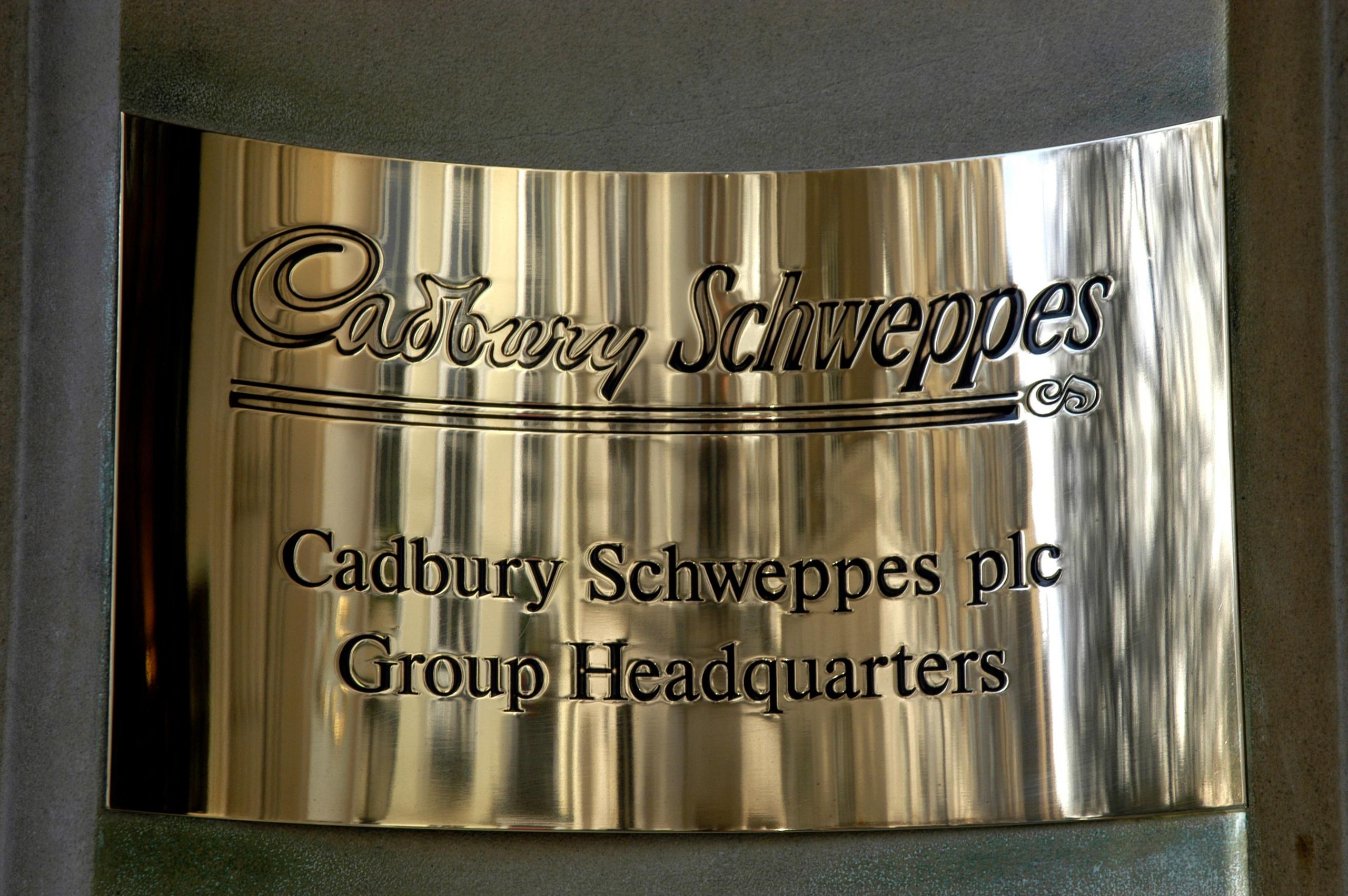
Cadbury and Schweppes merged in 1969, and demerged in 2008
Before American food giant Kraft's controversial hostile takeover of Cadbury in 2010, the chocolate maker had a history of taking over other confectionery businesses.
Way back in 1919, Cadbury took over Fry's, another chocolate maker run by Quakers, based in Bristol. The firm predated Cadbury and created the first solid chocolate bar in 1847.
After the merger, production also began at a factory in Somerdale, just outside Bristol.
Then in 1969, Cadbury bought another iconic British brand, the drinks maker Schweppes.
The company was known as Cadbury Schweppes until 2008, when confectionery and drinks were split into two businesses, Dr Pepper Snapple Group and Cadbury plc.
After nearly a century in 2007, Cadbury announced plans to close the Somerdale plant, and move production to Poland, with the loss of hundreds of jobs.
But by 2010 it would be Cadbury's turn to face a takeover of its own.
New owners Kraft initially pledged to keep the Bristol factory open before going back on its word and closing down production there a year later.
1973: Europe rejects Cadbury chocolate
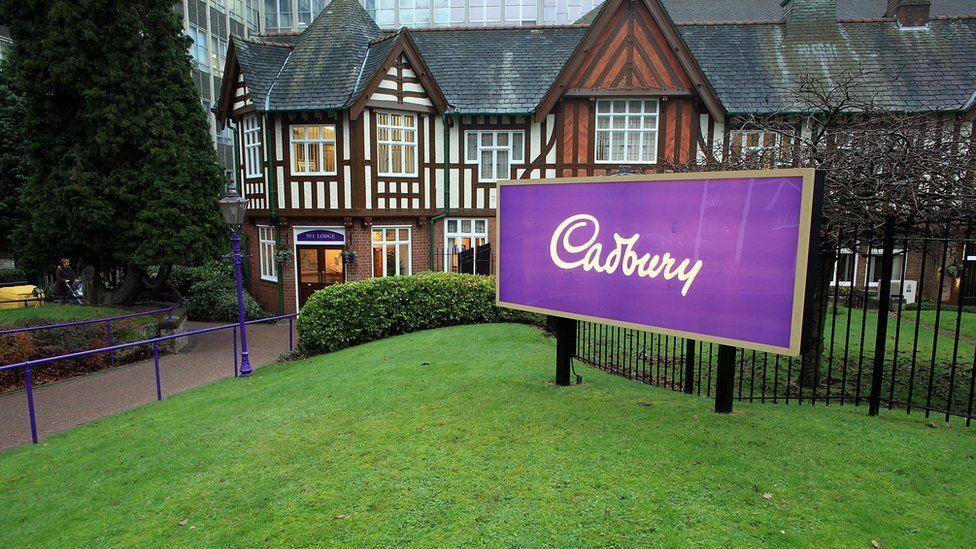
In 1973, Cadbury's owners refused to alter their recipe to meet rules over chocolate sales in Europe
Ever since 1973, when the country voted to join the then European Economic Community (EEC), the UK has been in rows with its continental partners.
Within months of the vote, one of those disagreements put Cadbury right at the centre of an argument over whether it actually sold chocolate.
The UK's new European partners told the company it's product was confectionery, and not chocolate, because its bars contained too much vegetable fat and not enough cocoa solids.
However, Cadbury bosses refused to change its recipe and for 27 years they were told their chocolate could not be sold in Europe.
Finally in 2000 however, European MPs voted to allow chocolate made with up to 5% vegetable fats or up to 20% milk content could finally be sold in all its then 15 member states.
1970s onwards: Groundbreaking adverts

Cadbury's drumming gorilla has been voted among the best adverts of all time
With the advent of colour television, Cadbury was at the vanguard of the advertising revolution, coming up with a series of iconic promotions for its biggest brands.
Readers of a certain age can probably hum "A finger of Fudge is just enough to give your kids a treat" and "everyone's a Fruit and Nut case".
In 2007, with video sharing website YouTube in its infancy, a Dairy Milk advert showing a life-like Gorilla drumming to Phil Collins' "In The Air Tonight" went viral.
The unorthodox advert however, almost didn't see the light of day, but in 2015 it went on to be voted the best British ad in 60 years.
1990: Cadbury World opens
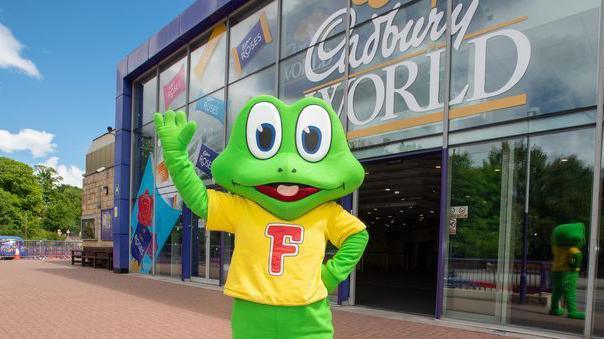
Cadbury World has around 600,000 visitors every year
Perhaps taking inspiration from Roald Dahl's Charlie and the Chocolate Factory, Cadbury World opened in 1990, giving visitors a peak inside the Bournville factory, as well as theme-park style rides and interactive exhibits.
It welcomes around 600,000 visitors every year, and in 2023 was taken over by Merlin Entertainments, the company behind Madame Tussauds, Alton Towers, and LEGOLAND.
The attraction is unveiling a new ride in spring 2024 as part of an £8m investment. Cadbury Chocolate Quest will replace Cadabra, which has had 14 million riders since it opened in 1997, including Adele, the Princess Royal, and Gwyneth Paltrow.
2010: The end of an era as Kraft takes over
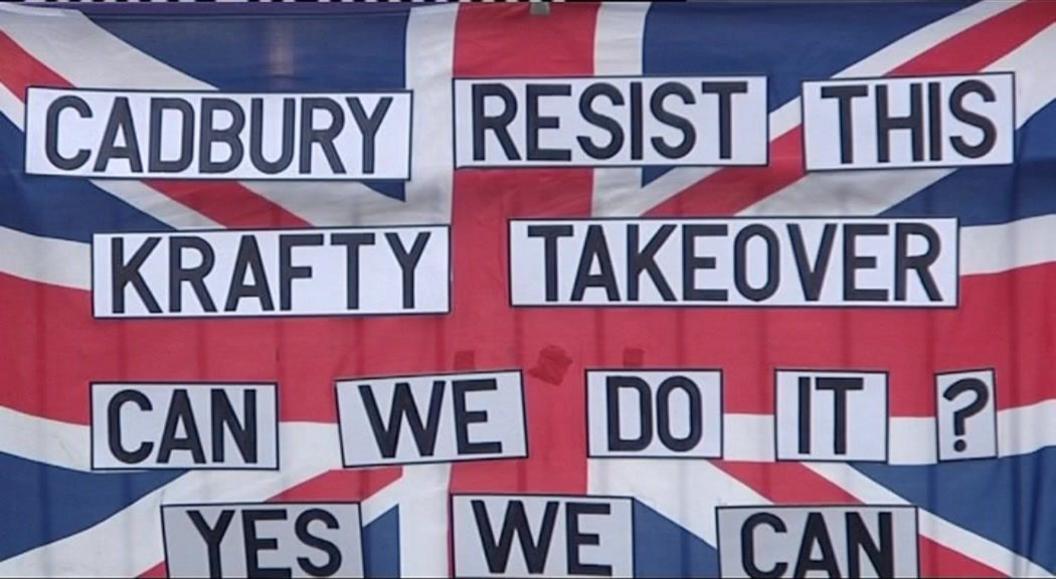
Cadbury workers protested angrily at the proposed takover by Kraft
In January 2010, the late Labour MP Jack Dromey was deputy general secretary of the union Unite. Amid angry protests, he described American giant Kraft's hostile takeover of Cadbury as "a sad day for Britain."
Workers demonstrated over the plans in Westminster and outside the Bournville factory, fearing plant closures and job losses. Initially, Cadbury rejected a £9.8bn valuation of the business, describing it as "derisory".
However, the board later agreed an improved £11.5bn offer in January 2010, signalling the end of Cadbury's British ownership after 186 years.
Kraft bosses promised to maintain production at Bournville, and initially pledged to overturn Cadbury's previous plan to close its factory in Somerdale near Bristol.
However, the new American owners soon reneged on that promise, and Somerdale closed in 2011.
There were also 200 job losses at Cadbury sites in Birmingham, North Wales and Herefordshire.
In 2012, Cadbury then became part of Kraft's confectionery arm, Mondelez International, with Bournville becoming the firm's Global Centre of Excellence for chocolate research and development.
In 2015, Mondelez announced 200 job losses at Bournville over two years, and some production was moved to Poland.
2024: What next?
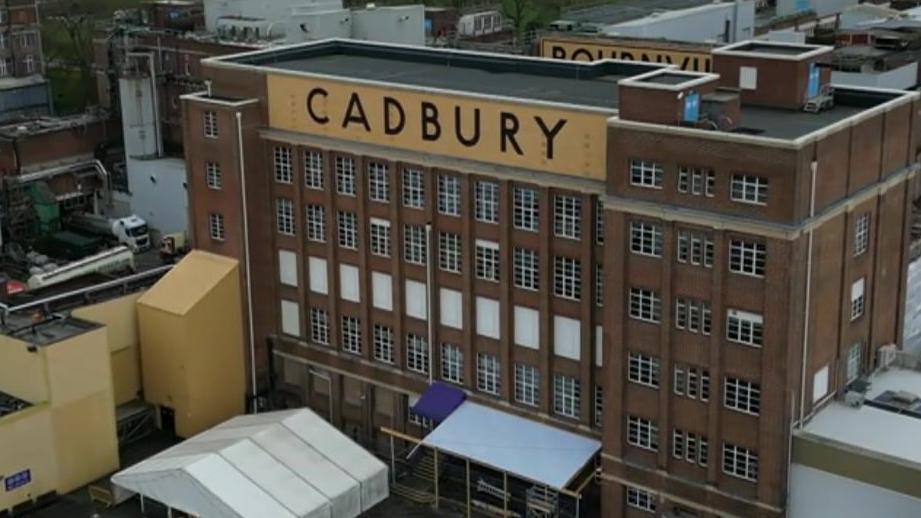
Bournville's new owners have invested in modernising the Victorian factory
The worst fears of the Kraft takeover haven't entirely been realised. There are fewer Cadbury employees than in 2010, but £80m has been spent modernising Bournville, including a new line to increase the production capacity for Dairy Milk bars.
Cadbury still produces approximately 132,000 tonnes of chocolate per year in Bournville, and in 24 hours makes around 1.8 million blocks of chocolate.
Bournville remains the spiritual home of Cadbury, and the suburb which surrounds it is still protected by the village trust set up by George Cadbury 124 years ago.
From humble beginnings, Cadbury became and remains Britain's best selling chocolate brand.
Follow BBC West Midlands on Facebook, external, X, external, and Instagram, external, Send your story ideas to: newsonline.westmidlands@bbc.co.uk, external